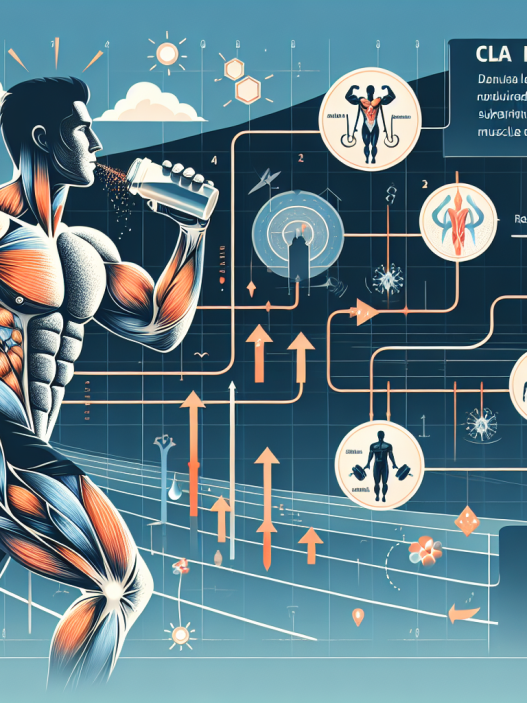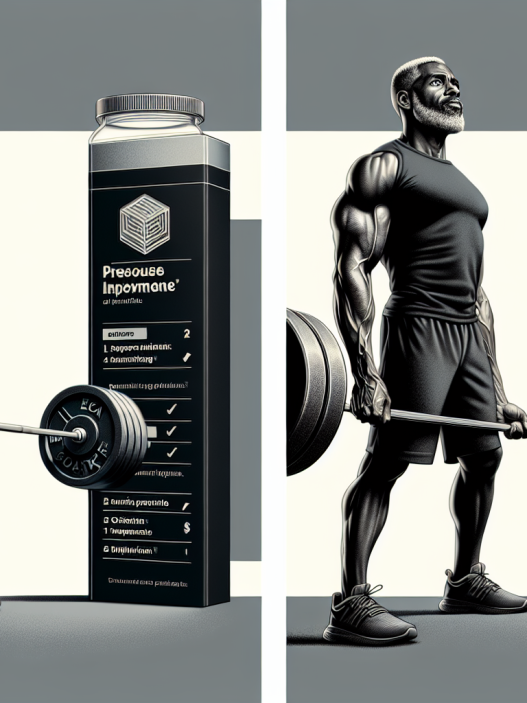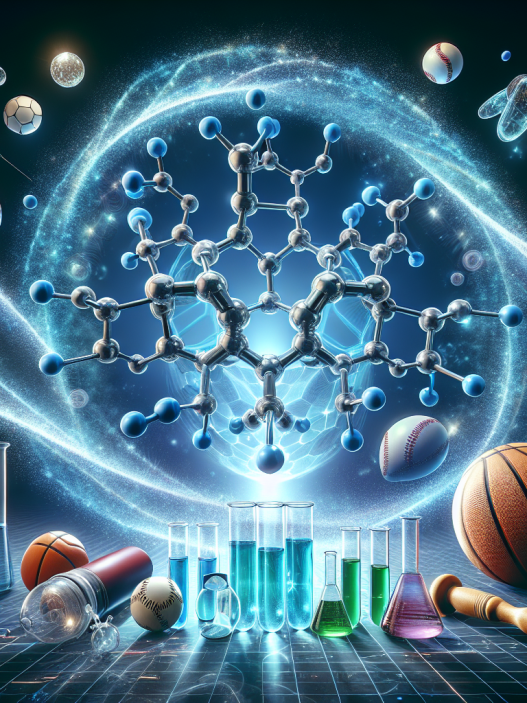-
Table of Contents
Comprehensive Analysis of Parabolan for Athletes
Parabolan, also known as trenbolone hexahydrobenzylcarbonate, is a powerful anabolic steroid that has gained popularity among athletes for its ability to enhance muscle growth and strength. It is a modified form of the hormone nandrolone, with an added double bond at the 9th and 11th carbon positions, making it more potent and resistant to metabolism. In this article, we will provide a comprehensive analysis of parabolan for athletes, including its pharmacokinetics, pharmacodynamics, and potential benefits and risks.
Pharmacokinetics of Parabolan
Parabolan is administered via intramuscular injection and has a half-life of approximately 14 days. This means that it stays in the body for a longer period compared to other anabolic steroids, allowing for less frequent dosing. The esterification of trenbolone in parabolan slows down its release into the bloodstream, resulting in a sustained and gradual release of the hormone. This also contributes to its longer half-life.
After injection, parabolan is rapidly absorbed into the bloodstream and reaches peak plasma levels within 24-48 hours. It is then metabolized by the liver and excreted through the kidneys. The majority of the drug is excreted in the urine, with a small amount being eliminated through feces.
Parabolan has a high binding affinity for androgen receptors, which allows it to exert its anabolic effects on muscle tissue. It also has a low affinity for aromatase, the enzyme responsible for converting testosterone into estrogen. This means that parabolan does not convert to estrogen, making it a popular choice for athletes who want to avoid estrogen-related side effects such as water retention and gynecomastia.
Pharmacodynamics of Parabolan
The main mechanism of action of parabolan is through its binding to androgen receptors in muscle tissue. This stimulates protein synthesis, leading to an increase in muscle mass and strength. It also has a strong anti-catabolic effect, preventing the breakdown of muscle tissue during intense training or calorie-restricted periods.
Parabolan also has a high affinity for glucocorticoid receptors, which are responsible for the production of cortisol, a stress hormone that can have a catabolic effect on muscle tissue. By binding to these receptors, parabolan can reduce the production of cortisol, further enhancing its anti-catabolic properties.
In addition to its anabolic and anti-catabolic effects, parabolan also has a thermogenic effect, increasing the body’s metabolic rate and promoting fat loss. This makes it a popular choice for athletes looking to improve their body composition and achieve a leaner physique.
Potential Benefits for Athletes
Parabolan has gained popularity among athletes for its ability to enhance muscle growth, strength, and performance. It is commonly used in bulking cycles to help athletes gain lean muscle mass and improve their overall physique. It is also used in cutting cycles to preserve muscle mass while promoting fat loss.
One of the main benefits of parabolan is its ability to increase nitrogen retention in muscle tissue. This is essential for muscle growth, as nitrogen is a key component of protein synthesis. By increasing nitrogen retention, parabolan helps to create an anabolic environment in the body, promoting muscle growth and recovery.
Another potential benefit of parabolan for athletes is its ability to increase red blood cell production. This leads to an increase in oxygen delivery to muscles, improving endurance and performance. This can be especially beneficial for athletes participating in endurance sports such as cycling or long-distance running.
Risks and Side Effects
While parabolan has many potential benefits for athletes, it is important to note that it also carries some risks and potential side effects. As with any anabolic steroid, the misuse or abuse of parabolan can lead to serious health consequences.
One of the main risks associated with parabolan is its potential to suppress natural testosterone production. This can lead to a decrease in libido, erectile dysfunction, and other symptoms of low testosterone. To mitigate this risk, it is recommended to use parabolan in combination with exogenous testosterone to maintain normal hormone levels.
Parabolan can also cause androgenic side effects such as acne, hair loss, and increased body hair growth. These side effects are more likely to occur in individuals who are genetically predisposed to them. Female athletes should also be cautious when using parabolan, as it can cause virilization, leading to masculine characteristics such as deepening of the voice and facial hair growth.
Other potential side effects of parabolan include liver toxicity, cardiovascular issues, and mood changes. It is important to use parabolan responsibly and under the supervision of a healthcare professional to minimize these risks.
Real-World Examples
Parabolan has been used by many athletes in the past, with some notable examples being bodybuilders Andreas Munzer and Milos Sarcev. Both athletes were known for their impressive physiques and strength, and they attributed their success to the use of parabolan.
In a study published in the Journal of Applied Physiology, researchers found that parabolan significantly increased lean body mass and strength in male rats (Kicman et al. 1992). This supports the anecdotal evidence of athletes experiencing similar effects when using parabolan.
Expert Opinion
According to Dr. John Berardi, a renowned sports nutritionist and exercise physiologist, parabolan can be a valuable tool for athletes looking to improve their performance and physique. However, he emphasizes the importance of using it responsibly and under the guidance of a healthcare professional to minimize potential risks and side effects.
“Parabolan can be a powerful addition to an athlete’s training regimen, but it should not be taken lightly. It is important to understand the potential risks and side effects and use it responsibly to achieve the desired results,” says Dr. Berardi.
Conclusion
In conclusion, parabolan is a potent anabolic steroid that has gained popularity among athletes for its ability to enhance muscle growth, strength, and performance. It has a long half-life and a high binding affinity for androgen receptors, making it an effective choice for both bulking and cutting cycles. However, it also carries some risks and potential side effects, and it is important to use it responsibly and under the supervision of a healthcare professional. With proper use, parabolan can be a valuable tool for athletes looking to achieve their fitness goals.
References
Kicman, A. T., Gower, D. B., Anielski, P., & Thomas, A. (1992). Endocrine profiles in dwarf rats treated with trenbolone acetate. Journal of Applied Physiology, 73(1),











